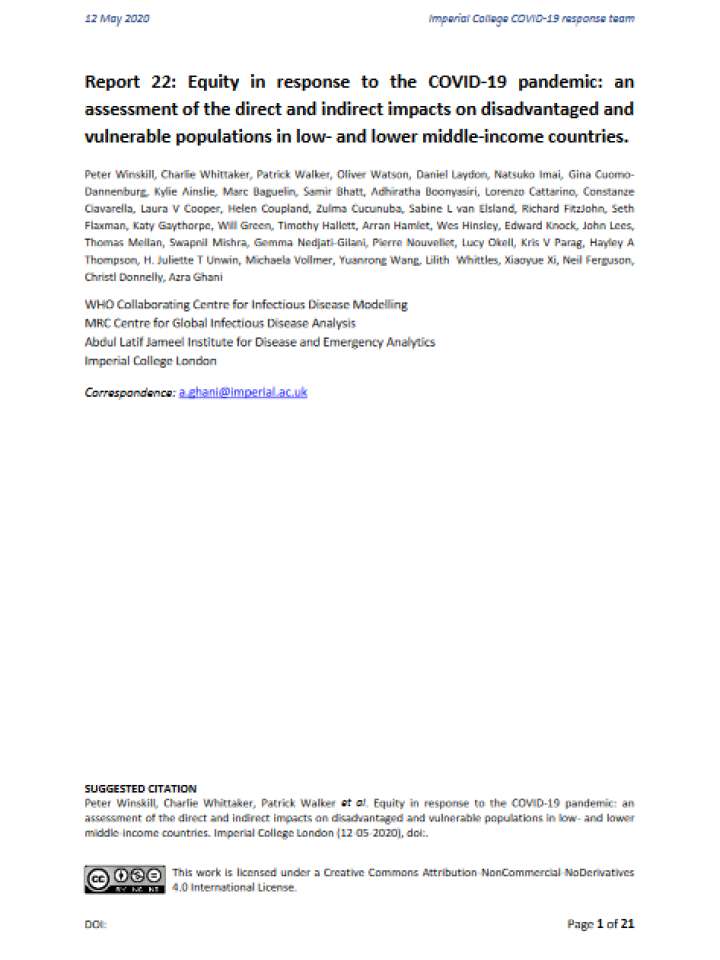Report 22 - Equity in response to the COVID-19 pandemic: an assessment of the direct and indirect impacts on disadvantaged and vulnerable populations in low- and lower middle-income countries
This study explores the relationship between poverty and exposure to coronavirus disease 2019 (COVID-19) by using large-scale household surveys to quantify the differences in handwashing access, occupation and hospital access with respect to wealth status in low-income settings. The authors use a COVID-19 transmission model to demonstrate the impact of these differences. The study's results demonstrate clear trends that the probability of death from COVID-19 increases with increasing poverty.
The authors further explore how risk mediators and the indirect impacts of COVID-19 may also hit these same disadvantaged and vulnerable the hardest. They find that larger, inter-generational households that may hamper efforts to protect the elderly if social distancing is associated with lower-income countries and, within Lower-Middle Income Countries (LMICs), lower wealth status. Poorer populations are also more susceptible to food security issues-with these populations having the highest levels under-nourishment whilst also being most dependent on their own food production. The study shows that the timing of the COVID-19 epidemic in low-resource settings has the potential to interrupt planning and harvesting seasons for staple crops, thereby accentuating this vulnerability.
Explore further
